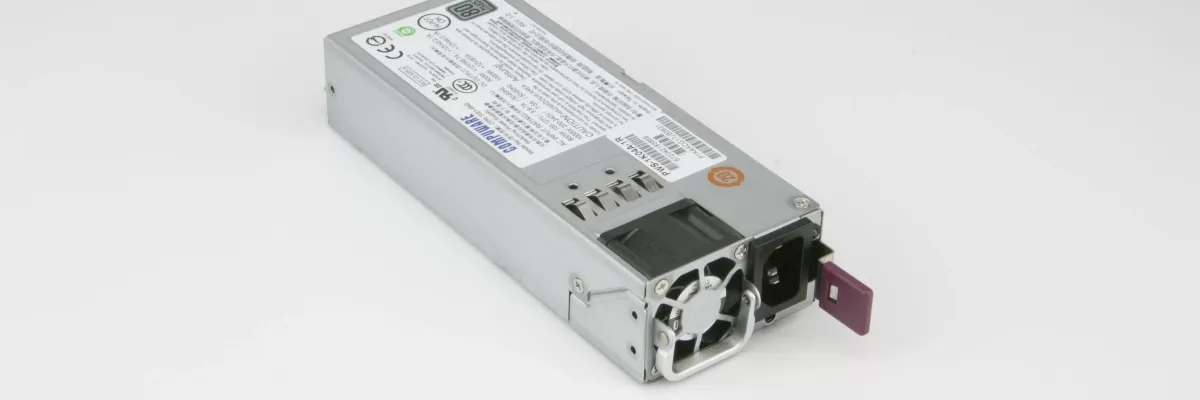
Introduction of server power supply
The server power supply is a critical component of modern computing infrastructure. It provides the necessary power to servers, ensuring uninterrupted operation and data protection. The use of redundant power supply configurations has become increasingly popular in recent years, enabling improved server uptime, reliability, and performance. In this article, we will explore the reasons why servers have 2 power supply units and the benefits of this configuration. We will also discuss the different modes of operation of server power supplies and best practices for selecting and maintaining these essential components. By the end of this article, readers will have a better understanding of the importance of server power supply and how to ensure reliable and efficient operation of their computing infrastructure.
The servers have 2 power supplies
The importance of power supply in server operation cannot be overstated. A reliable and efficient power supply is crucial for uninterrupted server operation and data protection. Server power supplies typically come in three modes of operation: parallel redundant mode, load-sharing mode, and standby mode.
In parallel redundant mode, both power supplies are active and share the load, with each unit providing half of the required power. In this configuration, if one PSU fails, the other takes over automatically without interrupting server operation. The load-sharing mode works similarly but allows the PSUs to share the load based on the current power demand of the server. Standby mode involves one power supply being active and the other serving as a backup. This mode is less common because it can result in a single point of failure.
The benefits of having 2 power supply configurations are numerous. Redundancy ensures improved uptime and availability of servers, reducing the risk of data loss and financial damage caused by server downtime. In high-density computing environments, having 2 power supplies enables power distribution across multiple servers, reducing the power load on individual PSUs and improving overall server performance.
To ensure optimal performance and reliability, regular maintenance and testing of power supplies are essential. The use of high-quality power supplies also minimizes the risk of failure and extends the lifespan of the equipment. Best practices for selecting and installing power supplies include following manufacturer recommendations, considering the total power consumption of the server and any expansion plans, and choosing PSUs with adequate power output and efficiency ratings.
What are the benefits of having 2 power supplies in a server?
Having 2 power supplies in a server provides several benefits, including:
Increased reliability:
Redundant power supplies ensure that the server can continue to operate even if one power supply fails. This reduces the risk of downtime and data loss due to power supply failures.
Load balancing:
Dual power supplies can share the load evenly, reducing the risk of overloading and overheating.
Power redundancy:
Dual power supplies provide a redundant power source, ensuring that the server can continue to operate even if there is a power outage or the primary power supply fails.
Easy maintenance:
Dual power supplies make maintenance and replacement easier as one power supply can be replaced while the other continues to provide power to the server.
Improved performance:
Dual power supplies can provide more power than a single power supply, enabling higher performance and improved server uptime.
Overall, having 2 power supplies in a server improves reliability, availability, and performance, ensuring uninterrupted operation of critical applications and data.
How many power supplies need rack servers?
A rack server typically requires two power supplies to ensure redundancy and minimize downtime in case of a power supply failure.
Having two power supplies in a rack server provides several benefits, including:
Redundancy:
If one power supply fails, the other power supply can take over to ensure that the server continues to function. This can help prevent downtime and data loss.
Load balancing:
The server's power load can be balanced between the two power supplies, which can help ensure stable and reliable operation.
Energy efficiency:
The power supplies can be configured to run in a more energy-efficient manner by adjusting the power load and fan speed, which can help reduce power consumption and costs.
It is important to note that not all rack servers require two power supplies, and some smaller or less critical servers may only have one power supply. However, for larger and more critical servers, having redundant power supplies is a recommended best practice to ensure high availability and minimize downtime.
Conclusion
In conclusion, having two power supplies in a server, particularly a rack server, is an important aspect of ensuring high availability and minimizing downtime. Redundancy, load balancing, and energy efficiency are some of the key benefits of having two power supplies in a server. However, not all servers require two power supplies, and the specific power requirements will depend on the server's size, workload, and criticality. When selecting a server, it is important to consider the power requirements of the server, as well as the power requirements of other components in the server environment, to ensure efficient and reliable operation.

Leave a Comment